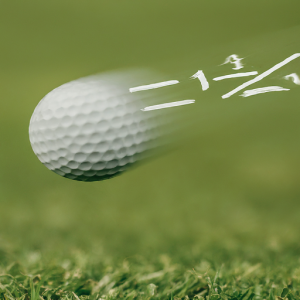Category:Mathematics

Mathematics in Golf: An Interdisciplinary Approach
Golf, often perceived as a game of precision, patience, and a bit of luck, is also deeply intertwined with mathematics. From the geometry of the course to the physics of a golf ball's flight, the game provides a rich playground for mathematical concepts. This article explores how mathematics underpins various aspects of golf, enhancing both the sport's strategy and its competitive edge.
Geometry and Course Design
Golf course design is a prime example of applied geometry. Architects use mathematical principles to create fairways, greens, bunkers, and hazards that challenge players while maintaining aesthetic appeal. The ideal design involves optimizing the angles and distances to offer multiple strategic options for play.
- Greens: The shape, size, and slope of a green are calculated to influence how players approach their putts. The curvature of the green can affect ball roll, requiring players to consider tangents, arcs, and radii.
- Hazards: Placement of water bodies, bunkers, or trees involves geometric planning to force players into making strategic decisions, often involving risk versus reward calculations.
Physics of Golf Ball Flight
The flight of a golf ball is governed by several physical laws, which are essentially mathematical models:
- Aerodynamics: The lift and drag forces acting on a golf ball in flight are described by Bernoulli's principle and the Magnus effect, involving complex equations related to spin, velocity, and air density.
- Trajectory: The parabolic path of a ball can be predicted with equations of motion, taking into account initial velocity, angle of launch, and gravitational force.
- Club Design: Engineers use mathematical modeling to design clubs that optimize the transfer of energy from the club to the ball, reducing spin for drivers or increasing it for irons, all based on principles of physics.
Statistics and Strategy
Golf strategy heavily relies on statistics:
- Handicapping: The handicap system uses statistical methods to level the playing field, allowing players of different skills to compete fairly. It's a dynamic system that adjusts based on performance.
- Performance Analysis: Players and coaches analyze stroke play statistics like driving distance, putts per round, greens in regulation, and more, to identify areas for improvement.
- Course Management: Using probability, players decide on club selection or shot shape, often based on historical data or current conditions.
Optimization Theory
In golf, decisions often revolve around optimizing outcomes:
- Shot Optimization: Players might use mathematical optimization to decide the best shot given various constraints like wind, lie, and distance.
- Course Navigation: Choosing the best path through a course involves solving optimization problems in real-time, considering factors like terrain, hole layout, and personal strengths.
Technology and Mathematics
Modern golf technology leverages mathematics:
- GPS and Rangefinders: These devices use geometry and trigonometry to accurately measure distances to targets.
- Launch Monitors: These devices calculate ball speed, spin rate, launch angle, and more, using high-speed cameras and sophisticated algorithms to provide golfers with detailed feedback.
Pages in category "Mathematics"
The following 6 pages are in this category, out of 6 total.
